Printable Version of Topic
Click here to view this topic in its original format
914World.com _ 914World Garage _ Rear Wheel Bearings Loose
Posted by: DennisV Jan 3 2024, 05:50 PM
Should the rear wheel bearings be able to move within the trailing arm and contact the housing flange?
The bearings went in pretty easy after being frozen. When I put in the rear wheel hub, using the https://youtu.be/gbopaxplO5c?si=julXzly8VArNUGBh and https://youtu.be/FDZv0j85Ybc?si=M8F216Up7RhfxKYR, they seem to have broken free. I can slide them back and forth. Maybe that's the whole purpose of the housing flange, but seems sloppy.
Posted by: 930cabman Jan 3 2024, 06:18 PM
![]()
We will be crossing this bridge soon
Posted by: bdstone914 Jan 3 2024, 06:43 PM
@http://www.914world.com/bbs2/index.php?showuser=24575
Do you have the stub axles installed and nuts torqued?
If not they will be loose.
Posted by: bdstone914 Jan 3 2024, 06:46 PM
@http://www.914world.com/bbs2/index.php?showuser=24575
Do you have the stub axles installed and nuts torqued?
Did you install the bearing retainer plates?
If not they will be loose.
Posted by: mepstein Jan 3 2024, 07:14 PM
@http://www.914world.com/bbs2/index.php?showuser=24575
Do you have the stub axles installed and nuts torqued?
If not they will be loose.
Posted by: Superhawk996 Jan 3 2024, 07:14 PM
Outer bearing race should not be freely rotating within the trailing arm with or without the flange tightened.
The bearing is normally a light press fit into the trailing arm and shouldn’t allow the outer race to rotate or move laterally freely.
The retaining flange is basically a belt and suspenders safety to prevent the bearing from ever migrating laterally and to put a hard stop on how much it can move laterally.
If that bearing is truly able to rotate the outer race in the trailing arm, or if the outer race is free to move laterally, I’d remove it and replace with another bearing and/or measure bearing OD and trailing arm ID to make sure there is a light .001” - .002” press fit.
Posted by: Superhawk996 Jan 3 2024, 07:17 PM
@http://www.914world.com/bbs2/index.php?showuser=24575
Do you have the stub axles installed and nuts torqued?
If not they will be loose.
This is true - but pertains to the inner races.
Rolling the car or even putting static weight on the the car without the stubs installed will permanently damage the bearing due to the dual row, split inner race design.
Posted by: technicalninja Jan 3 2024, 08:30 PM
I agree !
Works great to break free the old bearings, easier to remove after.
Posted by: DennisV Jan 4 2024, 09:55 AM
Do you have the stub axles installed and nuts torqued?
If not they will be loose.
Nope. Trailing arms are not back on the car.
Outer bearing race should not be freely rotating within the trailing arm with or without the flange tightened.
The bearing is normally a light press fit into the trailing arm and shouldn’t allow the outer race to rotate or move laterally freely.
They are new bearings in freshly refurbished arms. I froze the bearings and they went in without issue. I didn't test how tight they were, but they weren't falling out.
Is it possible that I over tightened the hub using the impact wrench and pulled the bearing out of the housing? I thought the hub was meant to fully seat. I can rotate the hub with one hand, but it does have some resistance.
It sounds like I need to unwind all this? Remove the hubs, flange housing, and start over? What a PITA.
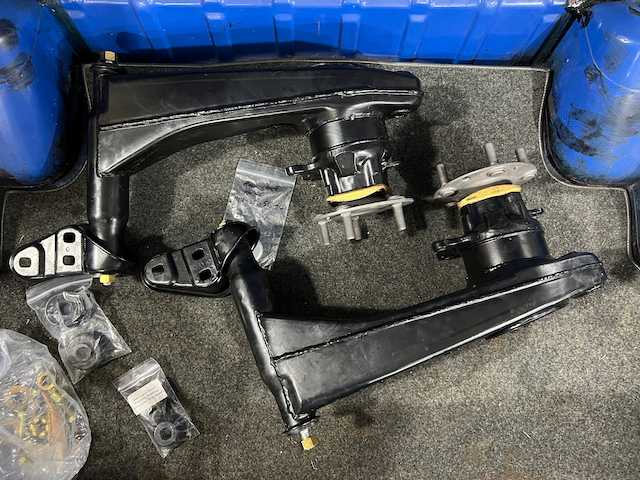
Posted by: Superhawk996 Jan 4 2024, 10:13 AM
Tightening the stub / hub on puts tension (pre-load) across inner split races. Tightening the hub but has no way to apply force laterally that would cause the outer bearing to migrate laterally.
After that tightening is done you shouldn’t have any lateral movement of the hub.
Rotation will have some light resistance due to bearing / grease / seal drag.
Can you post video to YouTube if you have lateral movement going on? It’s not clear to me exactly what you’re describing.
Posted by: DennisV Jan 4 2024, 10:27 AM
Can you post video to YouTube if you have lateral movement going on? It’s not clear to me exactly what you’re describing.
I can post a video in about a week when I'm back with the car.
The hub and bearing can move in the direction of the red arrow. When pulled outward, the bearing contacts the back of the flange as noted by dotted line.
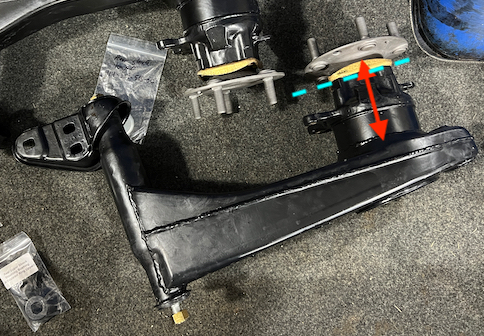
Posted by: bdstone914 Jan 4 2024, 10:50 AM
@http://www.914world.com/bbs2/index.php?showuser=24575
' date='Jan 4 2024, 10:27 AM' post='3121785']
[quote name='Superhawk996' post='3121781' date='Jan 4 2024, 08:13 AM']
Can you post video to YouTube if you have lateral movement going on? It’s not clear to me exactly what you’re describing.
[/quote]
I can post a video in about a week when I'm back with the car.
The hub and bearing can move in the direction of the red arrow. When pulled outward, the bearing contacts the back of the flange as noted by dotted line.
[/quote]
It sounds like you have the wrong bearing that is not wide enough. Bearing should be flush with the top of the trailing arm. What exactly did you buy?
Or the bore for the bearing is oversized. But it should have no clearance to the bearing retainer.
You will have side to side movement until you install the stub axle.
Posted by: DennisV Jan 4 2024, 01:05 PM
It sounds like you have the wrong bearing that is not wide enough. Bearing should be flush with the top of the trailing arm. What exactly did you buy?
Or the bore for the bearing is oversized. But it should have no clearance to the bearing retainer.
You will have side to side movement until you install the stub axle.
I bought 999-053-035-00 per the parts catalog https://www.stoddard.com/99905303500.html.html. Ended up being a FAG bearing.
I didn't take a photo before installing the retainer, but here is one from before the hub. It is not a lot of travel, but I was surprised it could be moved at all.
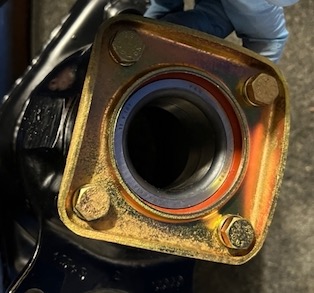
Posted by: Superhawk996 Jan 4 2024, 01:54 PM
Are you sure you have 914/6 or early 911 stubs / hubs?
Just thinking out loud (dangerous); weren’t there some 944 stub or hubs or something that folks were using back in the day to get 5 lug hubs but they needed a 5mm spacer or something like that on the stub axle?
@http://www.914world.com/bbs2/index.php?showuser=3457
Do you remember any weird stub or hub setups from back in the day when it would have been much harder to find a 914/6 hub?
Posted by: Superhawk996 Jan 4 2024, 02:08 PM
Also with respect to the impact wrench:
Without actually having something to prevent rotation of the hub an impact isn’t going to give you enough torque to tighten properly.
The hub nut needs to be tightened properly to set pre-load in the bearing. You need to do this with a real torque wrench and a breaker bar to keep hub from rotating and to get the high torque needed (217 -253 lb*ft per Haynes). It takes a LOT of torque to tighten the hub nut properly.
Failure to properly torque the hub nut will result in premature bearing failure.
Posted by: 914Sixer Jan 4 2024, 02:24 PM
This topic has been covered several times. The short version is the quality of the bearings. NEW bearings now seem to come in good, better and best. Original German bearings were in tight tolerance. I try not to use any bearings made after 1990. I only try to use FAG or SKF NOS original German, Spainish and Italian bearings.
As far as 911 or 944 hubs go, check all the info in the Classic section that cover the combinations.
Posted by: Krieger Jan 4 2024, 02:36 PM
I have some used rear bearings I removed you can have or use to measure. I wrecked them installing 5 lug hubs. I also have a pair of NOS wheel bearings you can measure out. Also one rear trailing arm laying around you could mess with. The hub has been removed.
Posted by: DennisV Jan 4 2024, 02:46 PM
Are you sure you have 914/6 or early 911 stubs / hubs?
Our car was a factory 914-6. Pretty darn sure they are 914-6 hubs.
Without actually having something to prevent rotation of the hub an impact isn’t going to give you enough torque to tighten properly.
Not sure what you're referring to regarding the rotation and torque. All I did was install the hub into the bearing in the trailing arm as pictured. Using the all thread rod, nuts and impact wrench method referenced in my initial post to pull the hub into the bearing.
If you're talking about the nut that secures the cv joint / drive shaft, I haven't gotten that far yet.
Is it wishful thinking that this problem goes away once the drive shafts are installed?
Posted by: rjames Jan 4 2024, 03:55 PM
Yes. Unless I'm misunderstanding the situation you've described, they shouldn't move once installed.
When I installed mine (after freezing them) they slipped right in by hand and then immediately warmed up and were firmly in place such that I wouldn't have been able to remove them without pressing them out like I had to do with the old ones.
Posted by: porschetub Jan 4 2024, 04:30 PM
Also with respect to the impact wrench:
Without actually having something to prevent rotation of the hub an impact isn’t going to give you enough torque to tighten properly.
The hub nut needs to be tightened properly to set pre-load in the bearing. You need to do this with a real torque wrench and a breaker bar to keep hub from rotating and to get the high torque needed (217 -253 lb*ft per Haynes). It takes a LOT of torque to tighten the hub nut properly.
Failure to properly torque the hub nut will result in premature bearing failure.
I have a bad RH side one to do and was always intending to measure the bearing OD and the trailing arm bore to be safe,I can return the bearing anytime as have a mate @ SKF where I purchased it ,cheers.
Posted by: bdstone914 Jan 4 2024, 04:35 PM
@http://www.914world.com/bbs2/index.php?showuser=22428
' date='Jan 4 2024, 01:54 PM' post='3121815']
Are you sure you have 914/6 or early 911 stubs / hubs?
Just thinking out loud (dangerous); weren’t there some 944 stub or hubs or something that folks were using back in the day to get 5 lug hubs but they needed a 5mm spacer or something like that on the stub axle?
@http://www.914world.com/bbs2/index.php?showuser=3457
Do you remember any weird stub or hub setups from back in the day when it would have been much harder to find a 914/6 hub?
[/quote]
It is the 74 and later 911 hub that needs a spacer. Thats when they went to a wider beraing.
Posted by: Superhawk996 Jan 4 2024, 06:23 PM
@http://www.914world.com/bbs2/index.php?showuser=1319
![]()
Thank you for that!
Looking at pictures of OPs hubs, they clearly don’t have the hub centric feature of the 74 and later 911 hubs so I guess that’s (lack of spacer) not the root cause.
Posted by: bdstone914 Jan 4 2024, 09:58 PM
@http://www.914world.com/bbs2/index.php?showuser=1319
Thank you for that!
Looking at pictures of OPs hubs, they clearly don’t have the hub centric feature of the 74 and later 911 hubs so I guess that’s (lack of spacer) not the root cause.
Correct. Still a mystery.
Posted by: Superhawk996 Jan 5 2024, 09:07 AM
Are you sure you have 914/6 or early 911 stubs / hubs?
Our car was a factory 914-6. Pretty darn sure they are 914-6 hubs.
Without actually having something to prevent rotation of the hub an impact isn’t going to give you enough torque to tighten properly.
Not sure what you're referring to regarding the rotation and torque. All I did was install the hub into the bearing in the trailing arm as pictured. Using the all thread rod, nuts and impact wrench method referenced in my initial post to pull the hub into the bearing.
If you're talking about the nut that secures the cv joint / drive shaft, I haven't gotten that far yet.
Is it wishful thinking that this problem goes away once the drive shafts are installed?
So catching up on posts since yesterday
What still isn’t clear to me:
Which is moving laterally - the inner race or the outer race?
As initially stated - after install the outer race should not move at all. Zero lateral movement between outer race and trailing arm bore. None. Zero, never. With or without retainer - it doesn’t matter. This doesn’t depend on anything else.
The inner race (and by extension the hub mounted within it): These are split inner races. I’ve seen some in the past that use a spring clip to secure one inner race to the other inner race just to keep them from separating and having the balls/cages fall out during shipping and handling prior to install. To a casual observer they might appear to be one piece but they are split races.
Without a CV stub installed and properly torqued (220 ish lb-ft) to the hub - there should be no judgement made about lateral movement of the inner races or the hub.
Once the stub and hub/hub nut have been properly torqued (using a torque wrench) then, and only then, there should be zero lateral movement of the hub.
Note; I apologize - in looking at the pictures earlier I should have noted that there are no CV stubs installed. I should have noticed that all we have is the bearing installed into the control arm after the initial bearing install. For some reason I got the impression the whole bearing (including outer race was moving laterally). Shame on me. Hopefully I didn’t make this thread longer than it needed to be to get you a clear answer.
Posted by: 911_2.2T Jan 8 2024, 01:06 AM
I went through the same last weekend and after I put in the bearing and the Hub I was afraid I had the wrong bearings or damaged the bearing on install. But after putting in the Stub axle and tightening it, all movement was gone.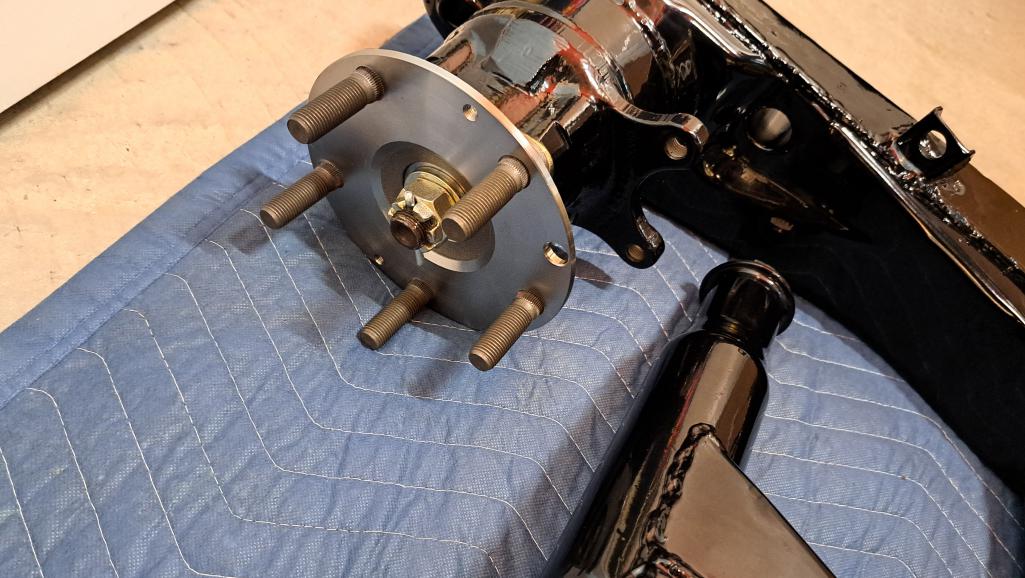
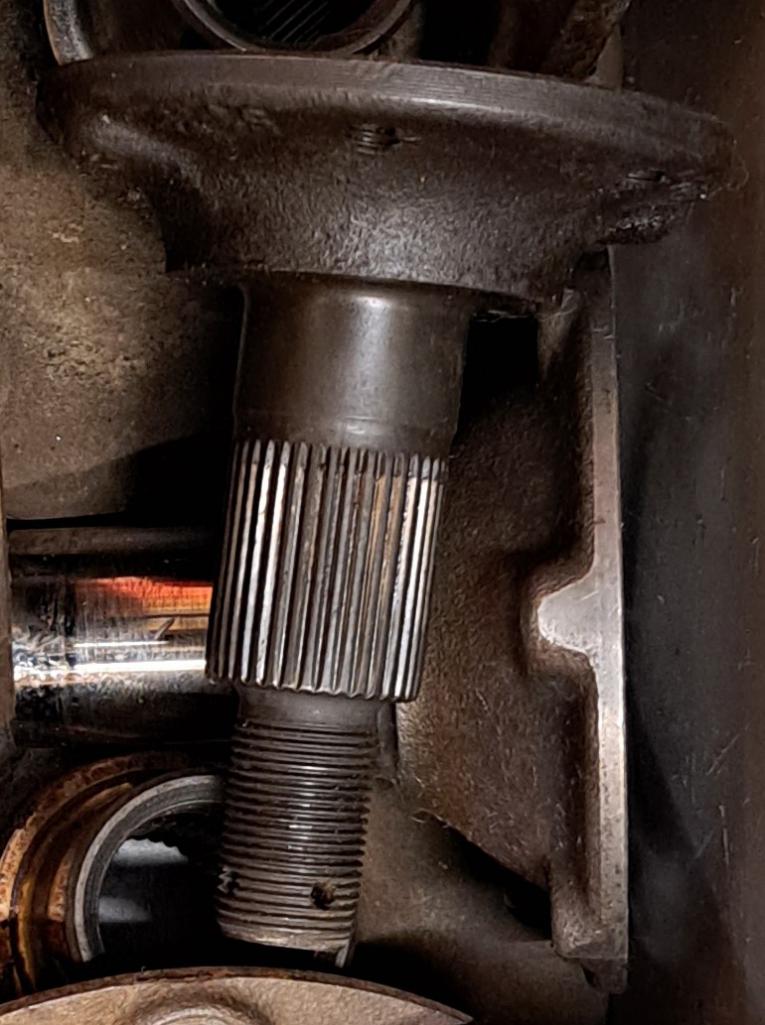
Posted by: DennisV Jan 8 2024, 09:10 AM
I went through the same last weekend and after I put in the bearing and the Hub I was afraid I had the wrong bearings or damaged the bearing on install. But after putting in the Stub axle and tightening it, all movement was gone.
Thanks for sharing this. I was hoping this was the answer, but I'm still uneasy with it. Are you able to tell if the bearing is slipping inside its seat in the trailing arm?
Posted by: rjames Jan 8 2024, 11:33 AM
I went through the same last weekend and after I put in the bearing and the Hub I was afraid I had the wrong bearings or damaged the bearing on install. But after putting in the Stub axle and tightening it, all movement was gone.
I'm no expert here, but I don't understand how reinstalling everything would correct an issue where the OD of the bearing was too small. I would think that the whole bearing might be rotating, which could oval out the trailing arm. No?
One of the reasons people sometimes remove the trailing arm just to install the bearing is because the bearings fit so tightly that they can be extremely difficult to press out. They shouldn't be loose in there.
Posted by: jhynesrockmtn Jan 9 2024, 08:31 AM
I also did this fairly recently on my BB. Trailing arms off of the car, all removed and replaced. I had to press the bearings in after freezing them. The stub axle was "loose" but the outer portion that contacts the arm was tight. Everything was tight once a proper torque was done after putting them back on the car.
Posted by: rgalla9146 Jan 10 2024, 10:43 AM
I went through the same last weekend and after I put in the bearing and the Hub I was afraid I had the wrong bearings or damaged the bearing on install. But after putting in the Stub axle and tightening it, all movement was gone.


Denis your pics show the hubs installed but not the stub axles.
When the stub axle (not just the hub) is installed and torqued the assembly is
complete and ready to roll and support the car. Until then you can not judge it.
Posted by: Bucci Jan 13 2024, 03:49 AM
I went through the same last weekend and after I put in the bearing and the Hub I was afraid I had the wrong bearings or damaged the bearing on install. But after putting in the Stub axle and tightening it, all movement was gone.
Thanks for sharing this. I was hoping this was the answer, but I'm still uneasy with it. Are you able to tell if the bearing is slipping inside its seat in the trailing arm?
Dennis, I had a very similar issue when I replaced one of my rear bearing. I purchased a new bearing and installed it and it was loose. At that time we determined that the trailing arm was faulty and maybe out of round. I hadinstalled a 3.2 L six cylinder motor and thought the torque damaged the trailing arm.
We found that the replacement bearings are did not have acceptable / good tolerances.
The solution was to use bearing retainer sealant when installing the bearing to take up the tolerance. After doing that, the new bearing worked well and I’ve not had any since..
Loctite Sleeve Retainer 640 - High Strength/High Temp - Green - 1.22-Fl Oz Bottle
https://www.henkel-adhesives.com/us/en/product/retaining-compounds/loctite_6400.html
https://www.permatex.com/products/thread-compounds/retaining-compounds/permatex-bearing-mount-relaxed-fit-adhesive-50-ml/
Posted by: DennisV Jan 25 2024, 01:20 PM
Finally able to make time to get back to the car. I am confused at this point. Is it acceptable to have some bearing movement once the hub is installed, but before the stub axel?
There was a request for a video. Here's https://youtu.be/BUNzLEVgcVo?si=N8A1xCDWpD6YFeKg. I've secured the rear trailing arm in a vise. I am using my hand to move the hub. You can see there is slight angular movement when I push side to side. It turns with slight smooth resistance.
I assume the orange part of the bearing that is visible is part of the inner bearing and meant to rotate. I can't tell if the outer bearing is moving inside the trailing arm. I think I'd have to tear it back apart to see that.
Posted by: burton73 Jan 25 2024, 02:14 PM
Finally able to make time to get back to the car. I am confused at this point. Is it acceptable to have some bearing movement once the hub is installed, but before the stub axel?
There was a request for a video. Here's https://youtu.be/BUNzLEVgcVo?si=N8A1xCDWpD6YFeKg. I've secured the rear trailing arm in a vise. I am using my hand to move the hub. You can see there is slight angular movement when I push side to side. It turns with slight smooth resistance.
I assume the orange part of the bearing that is visible is part of the inner bearing and meant to rotate. I can't tell if the outer bearing is moving inside the trailing arm. I think I'd have to tear it back apart to see that.
I believe that the bearing does float in the inside, bearings that I have put in machines over the years did so it would fit the shaft angle. All I know is when I tightened up the stub axel it did not move if that makes sense.
Best Bob B
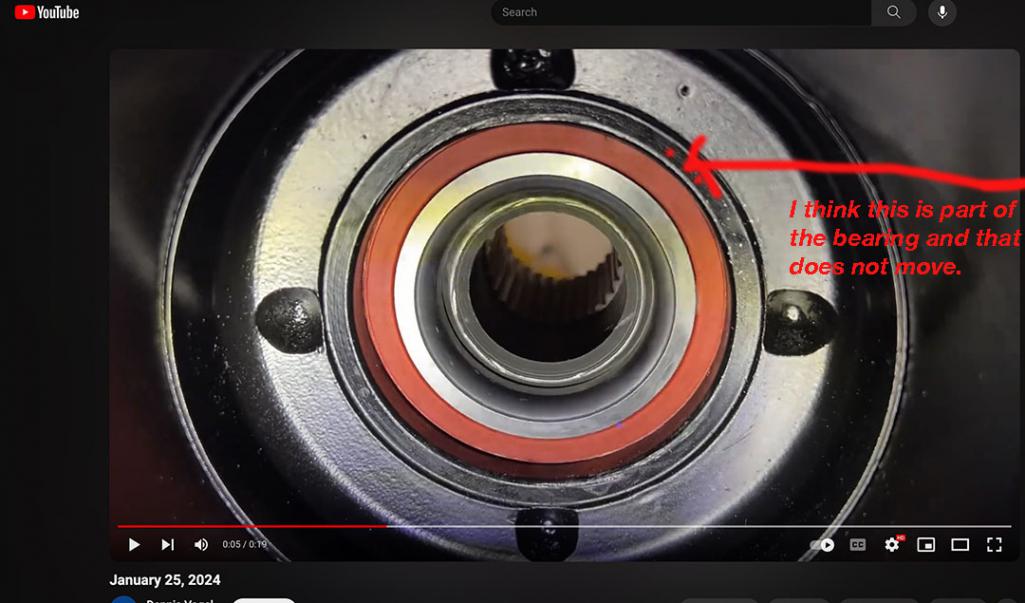
Posted by: Literati914 Jan 25 2024, 05:10 PM
Torque down the bolts and see if you're still loose ![]()
.
Powered by Invision Power Board (http://www.invisionboard.com)
© Invision Power Services (http://www.invisionpower.com)
